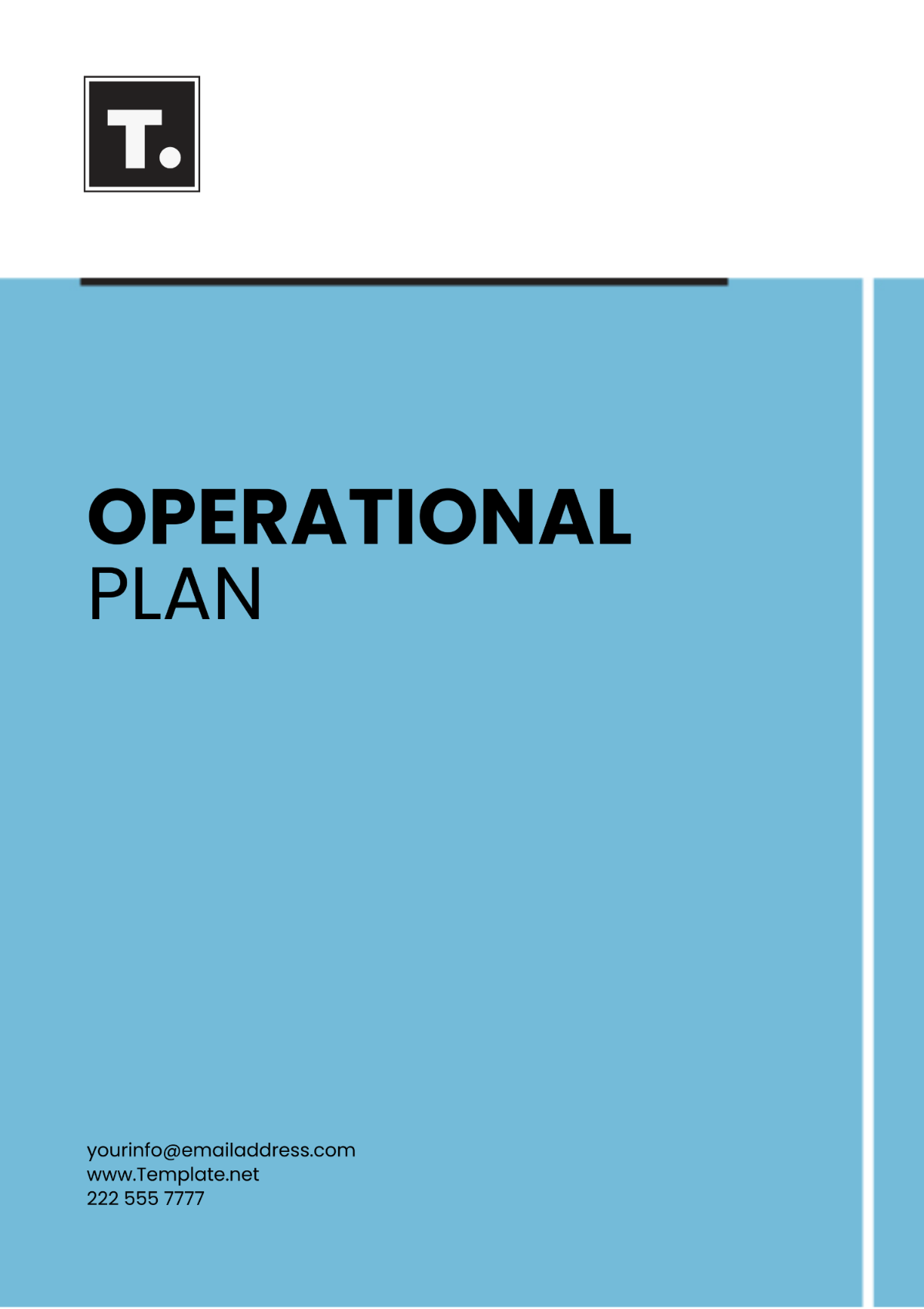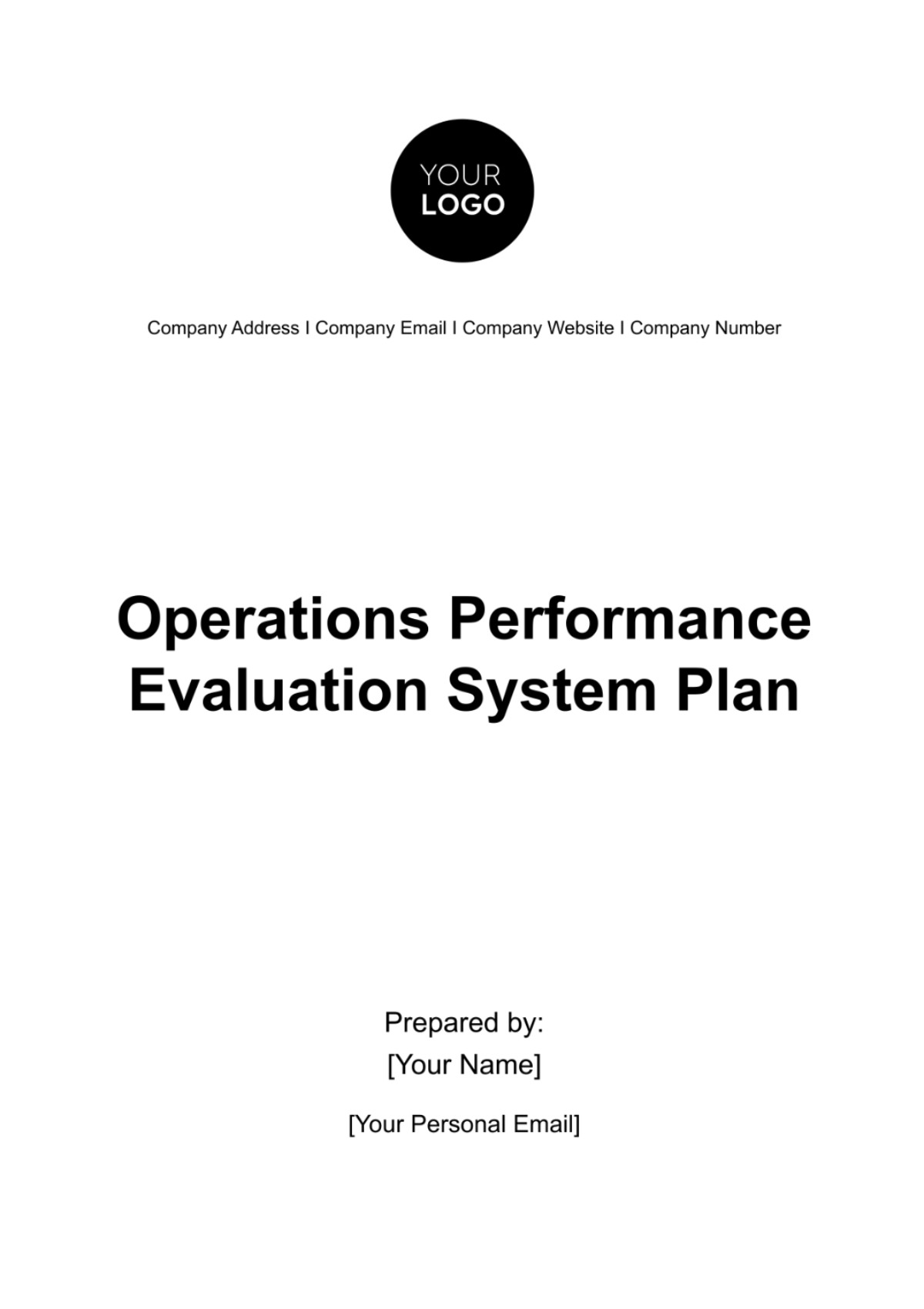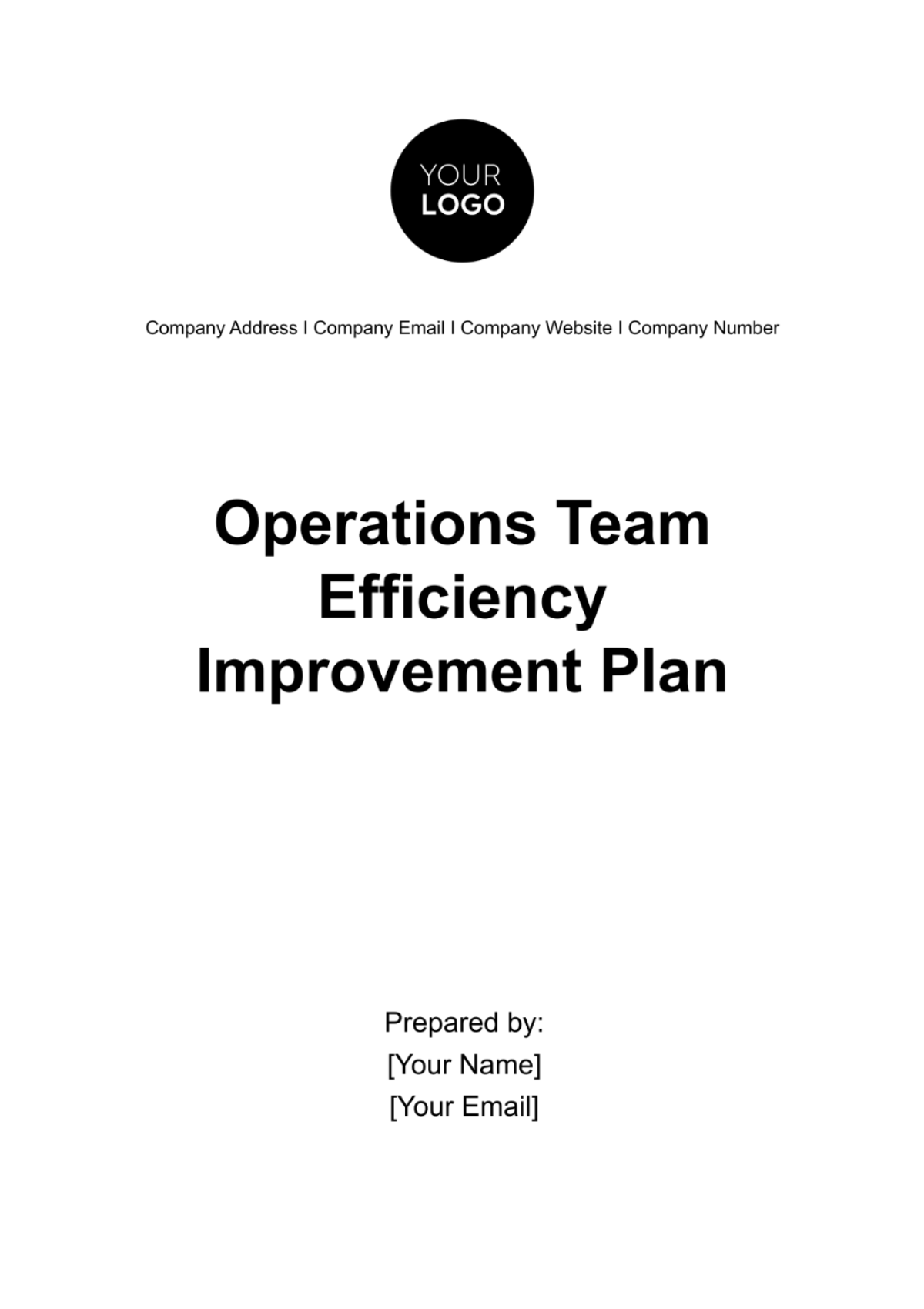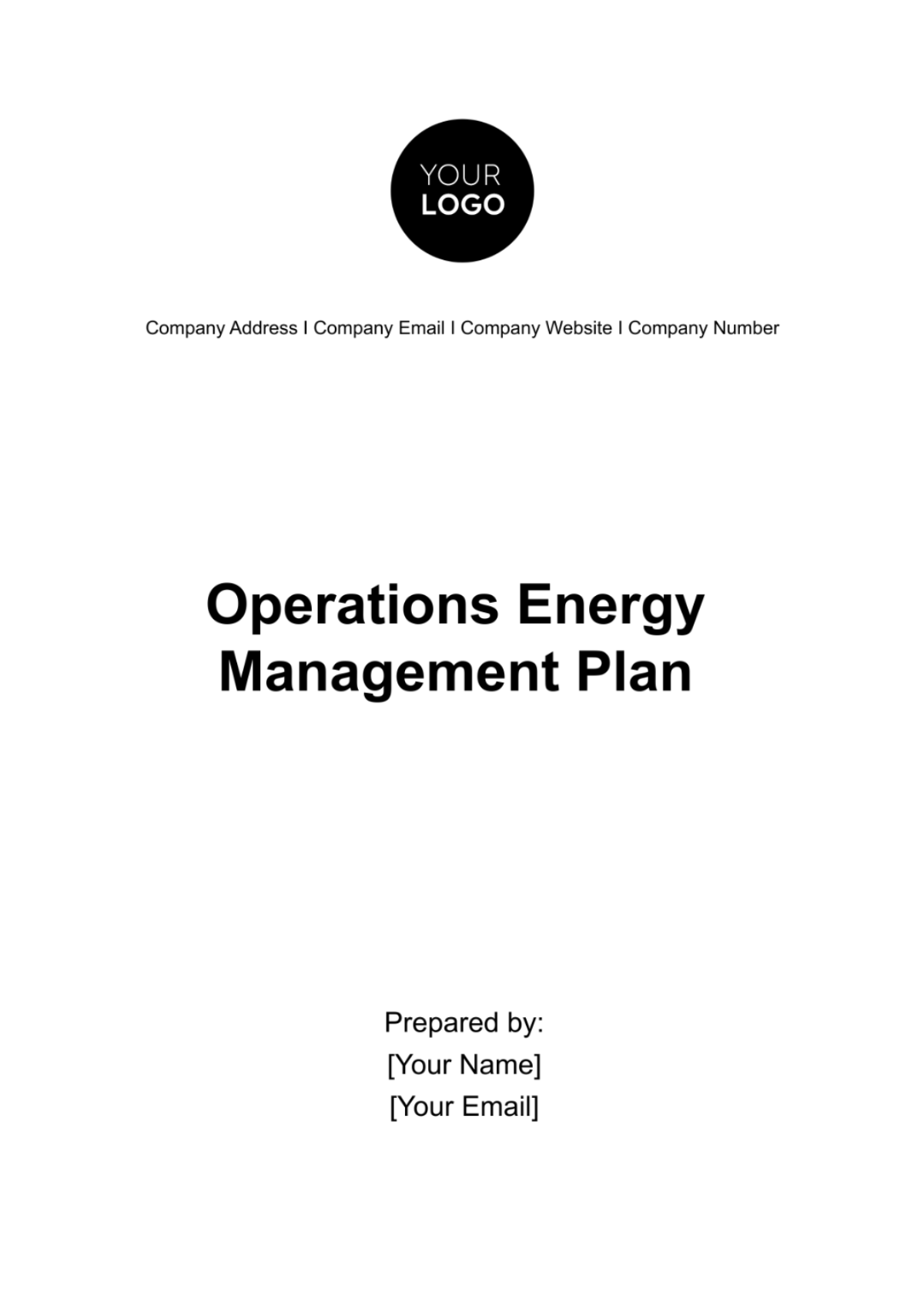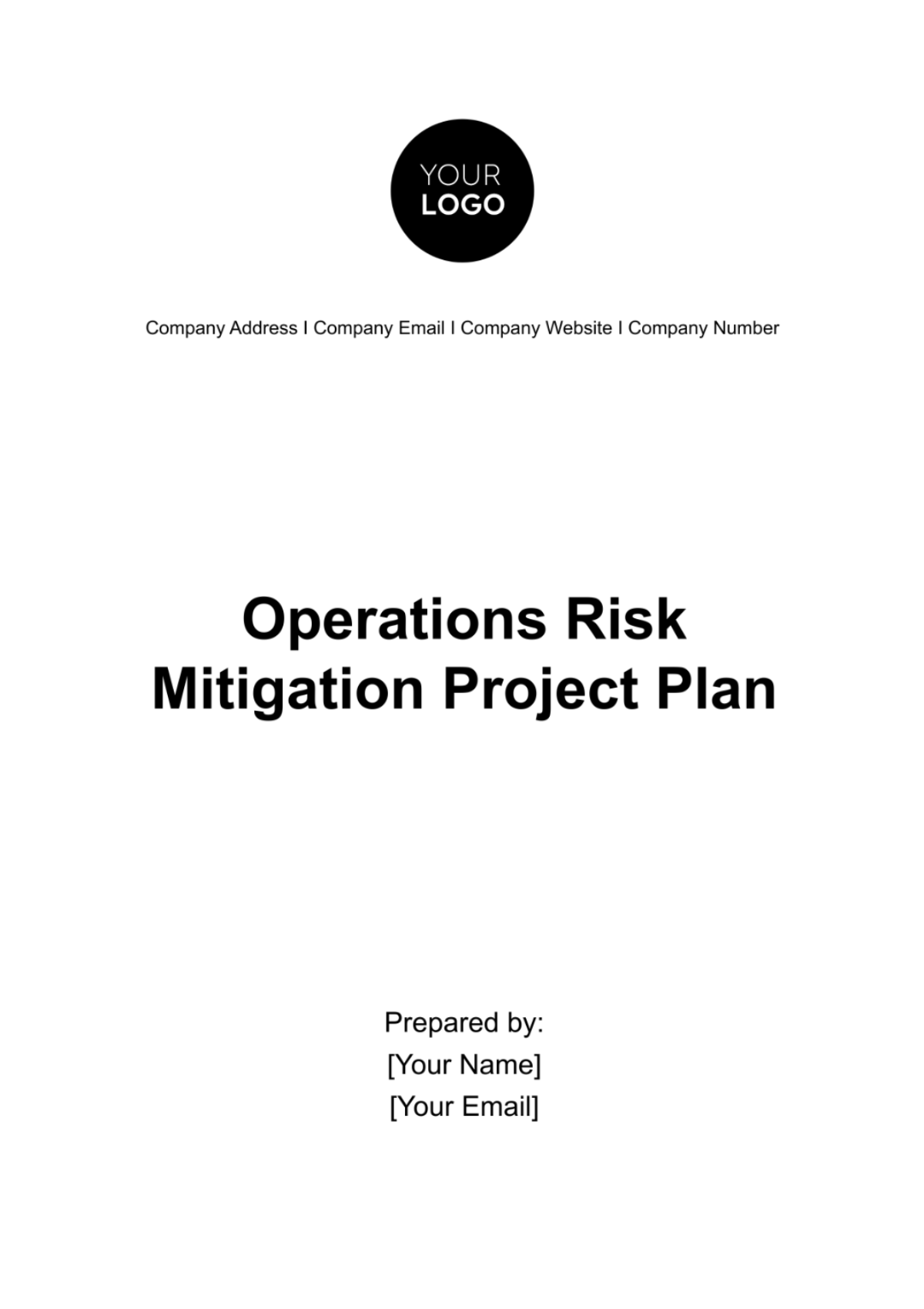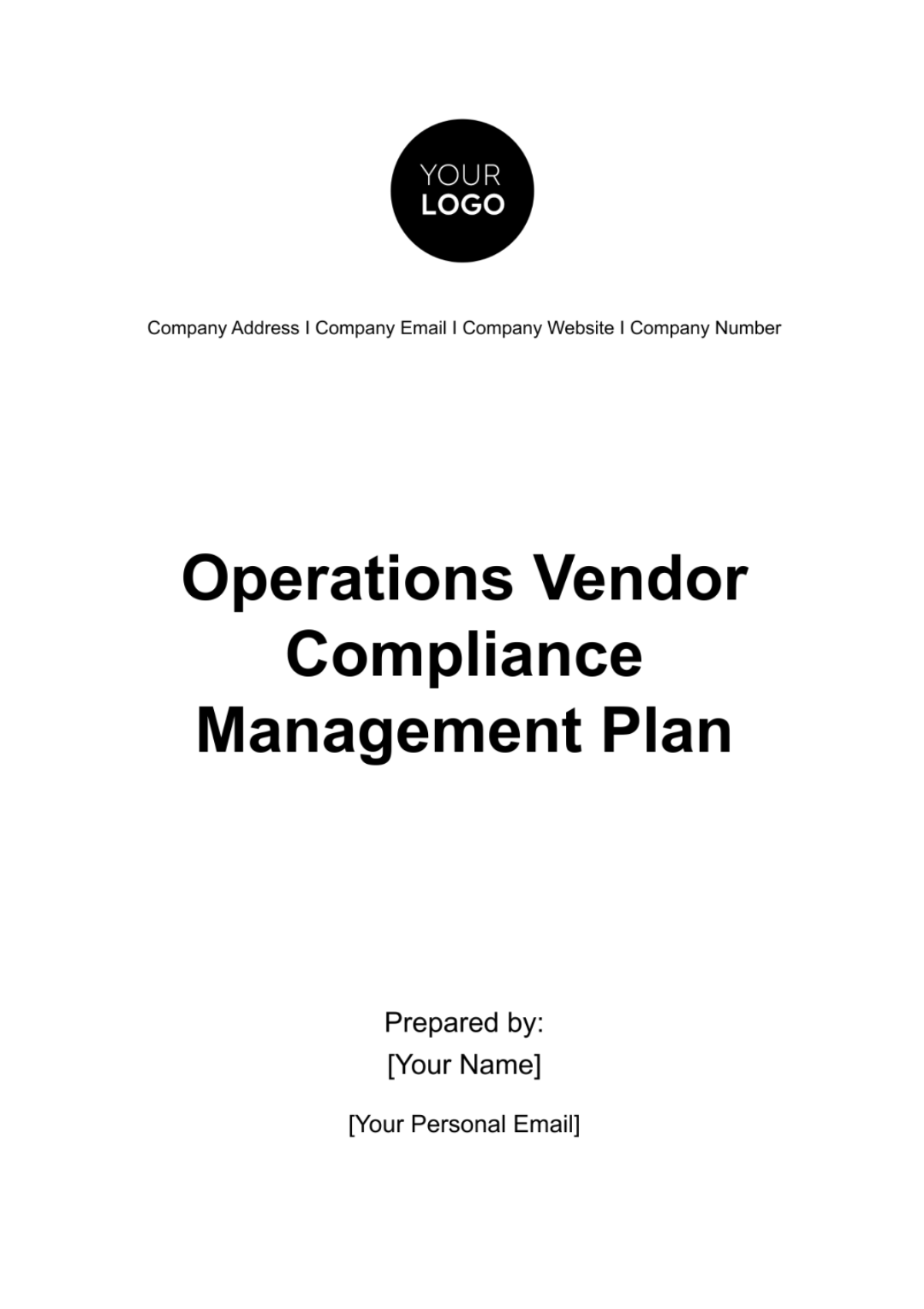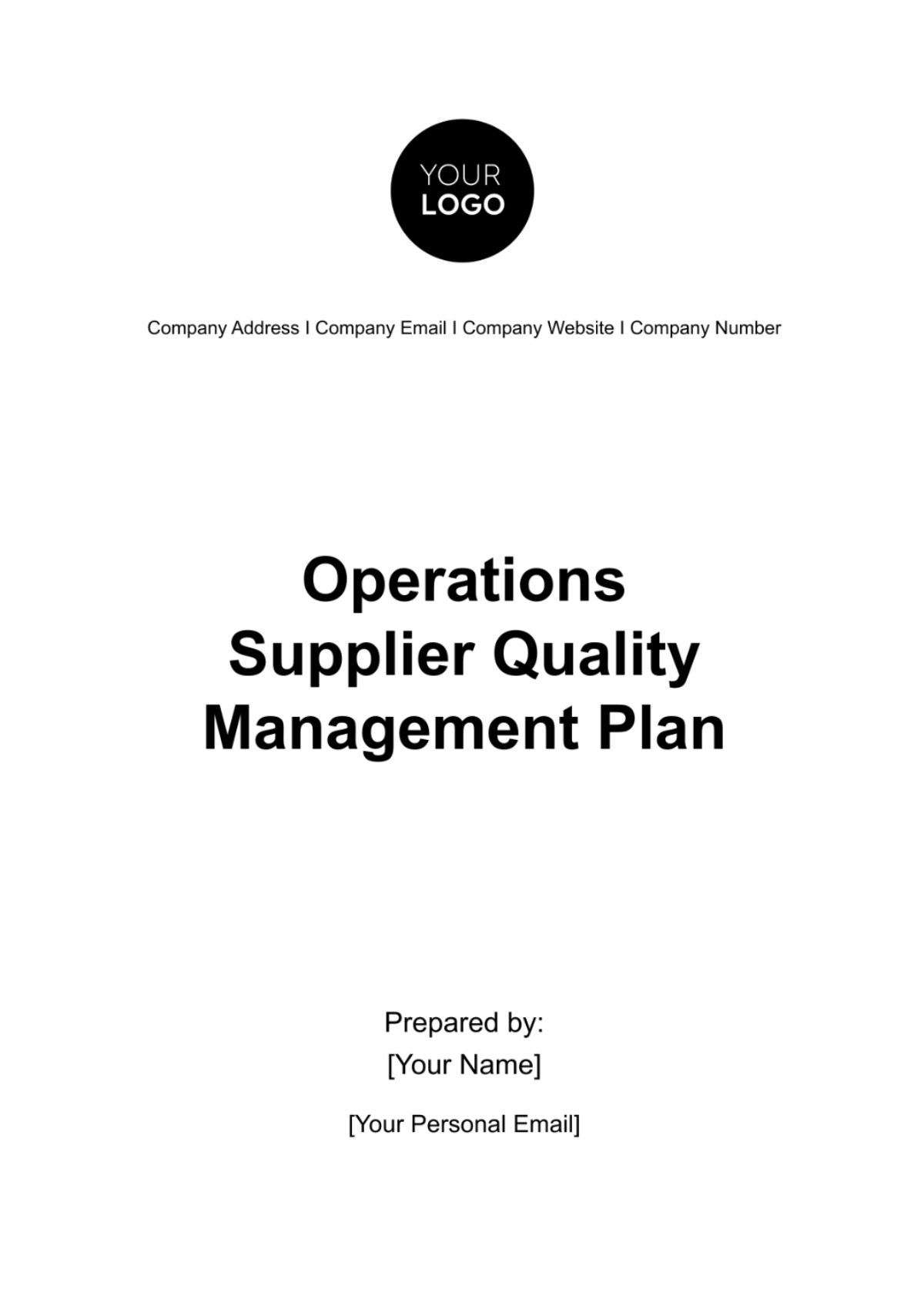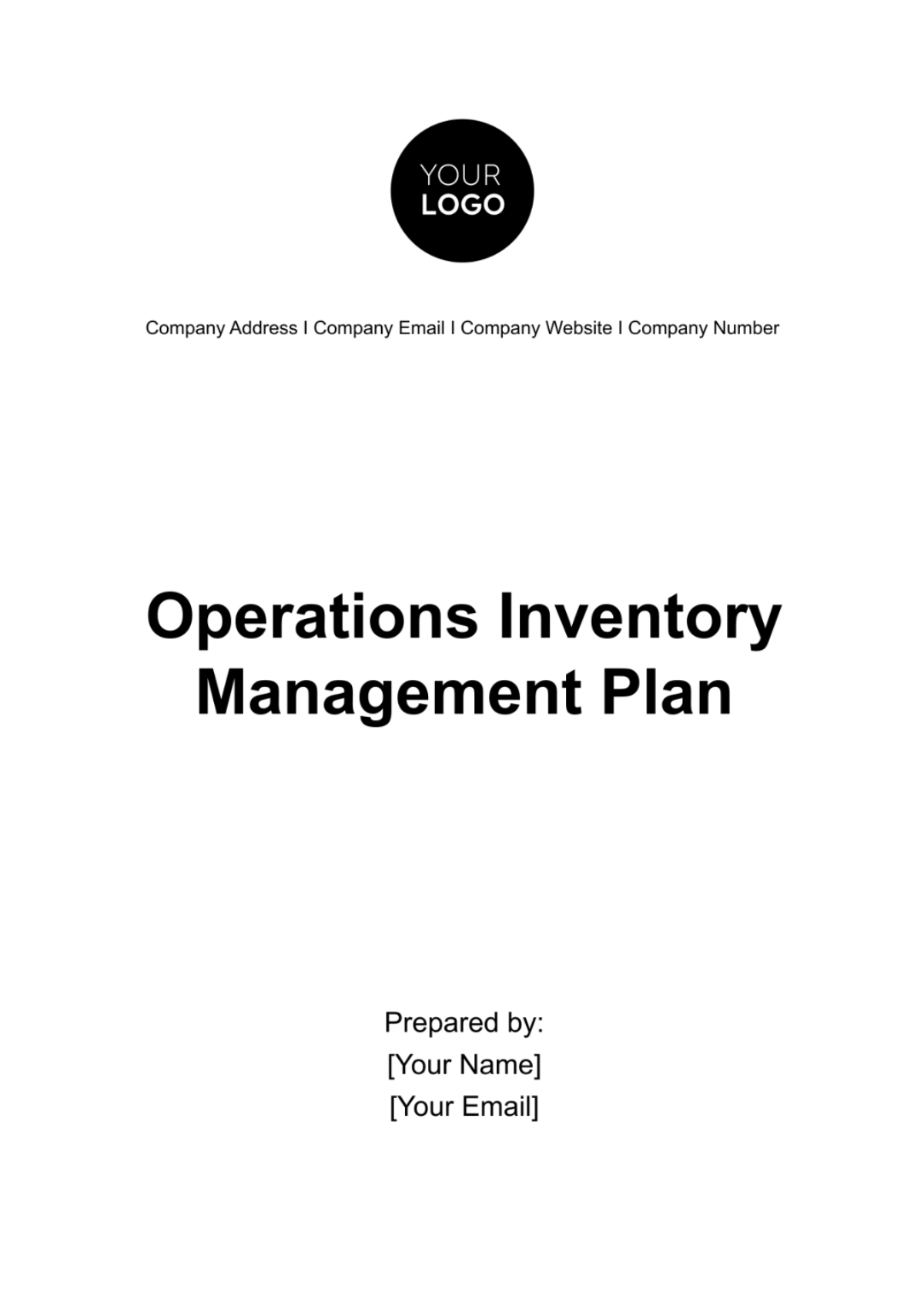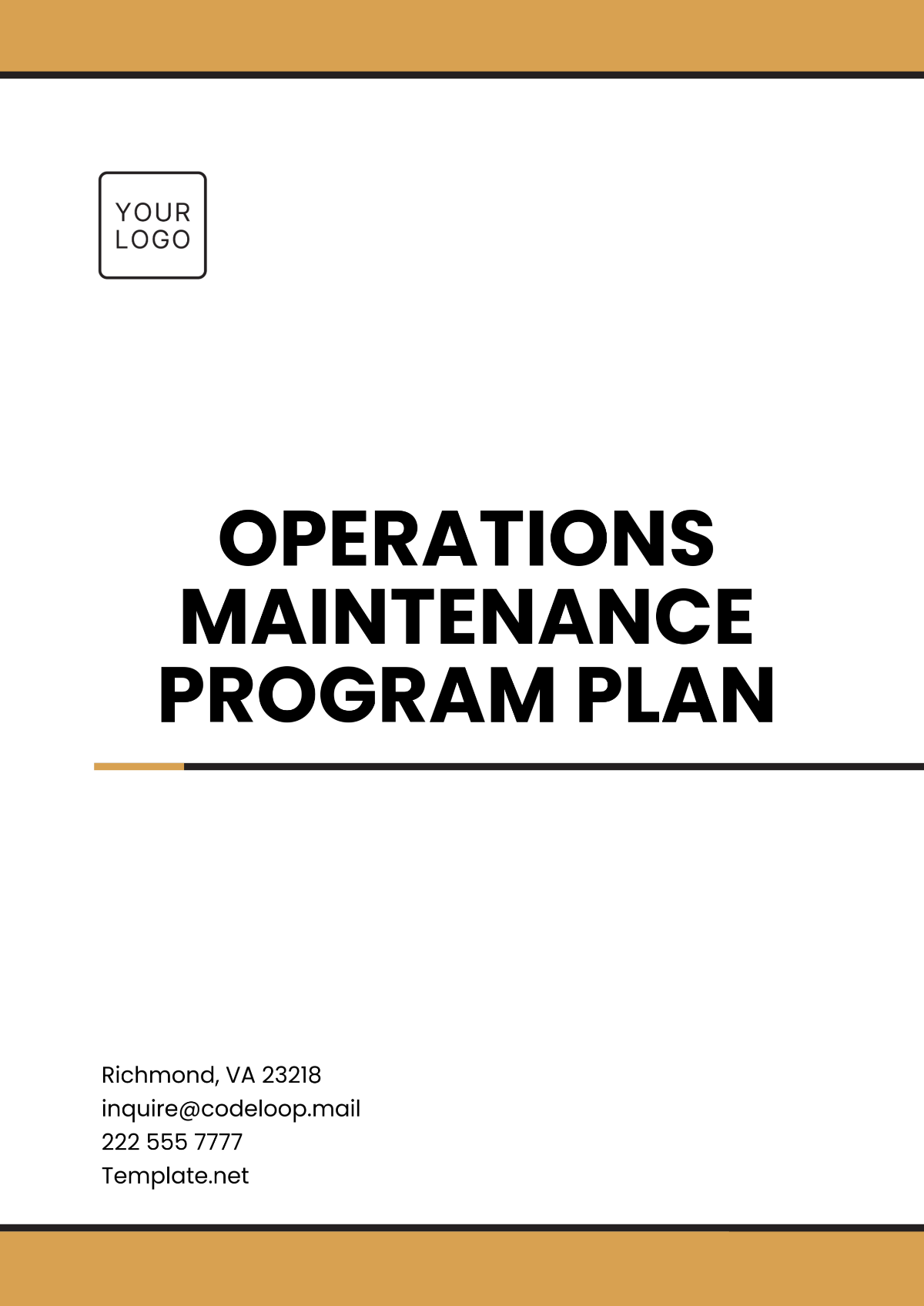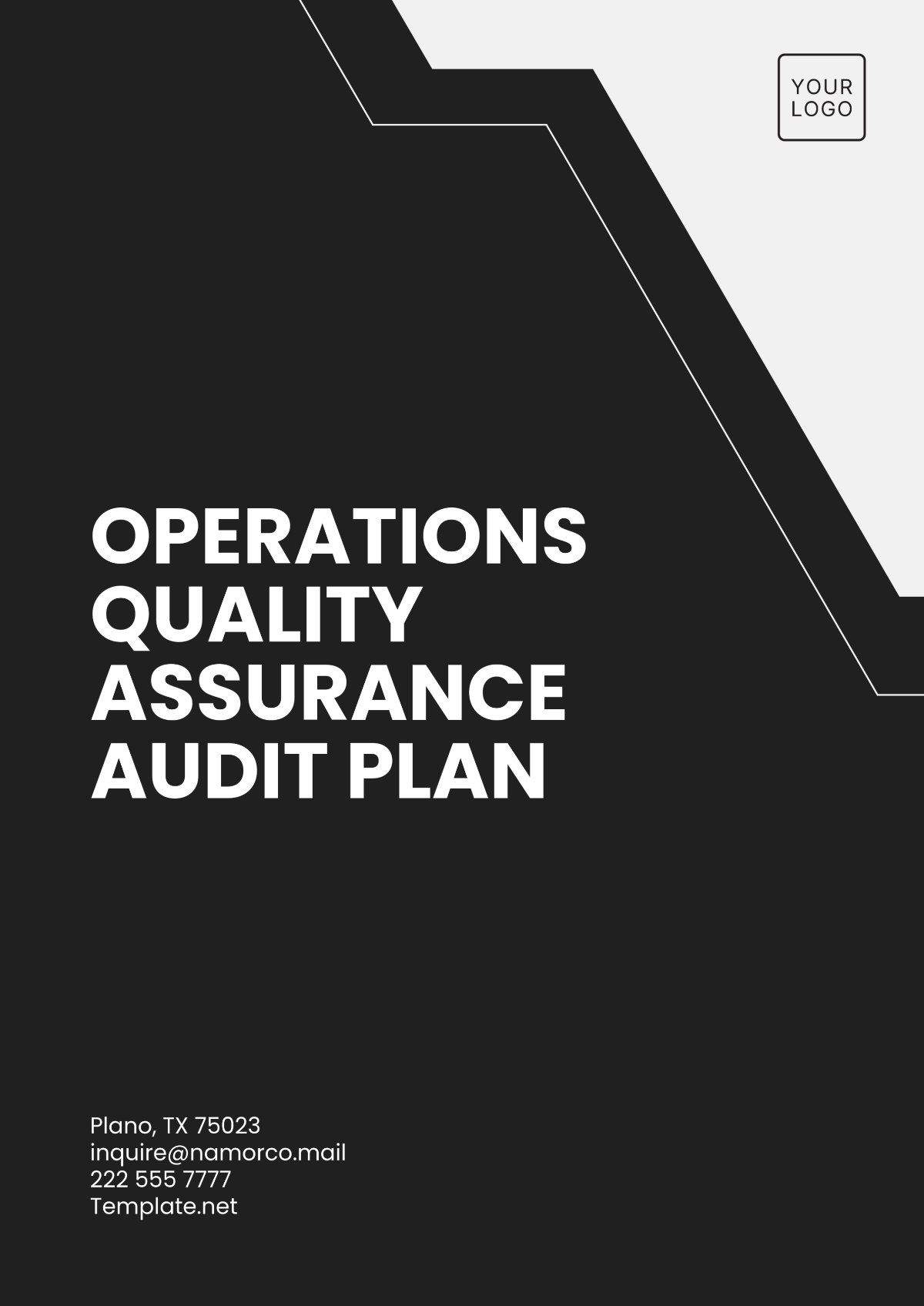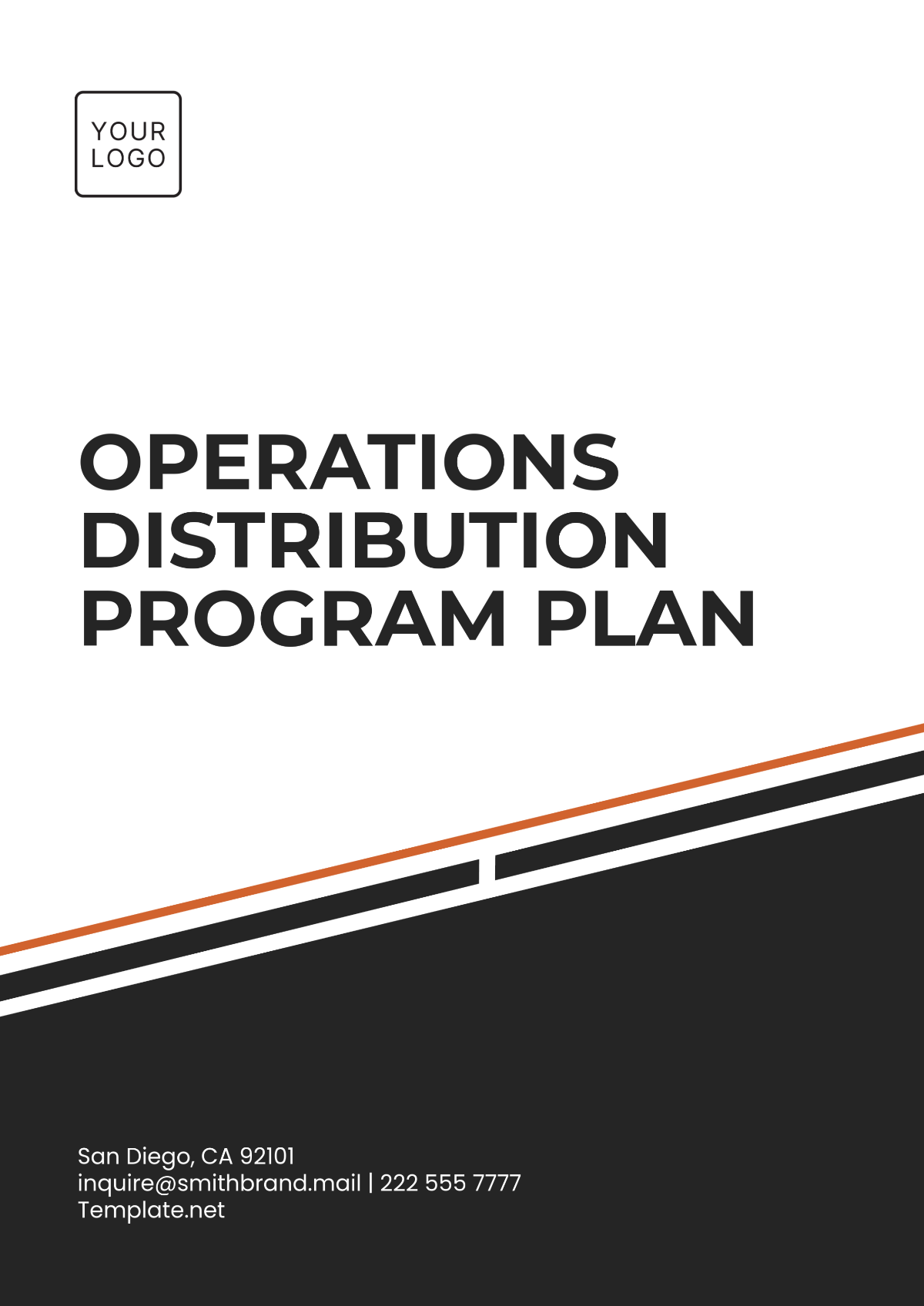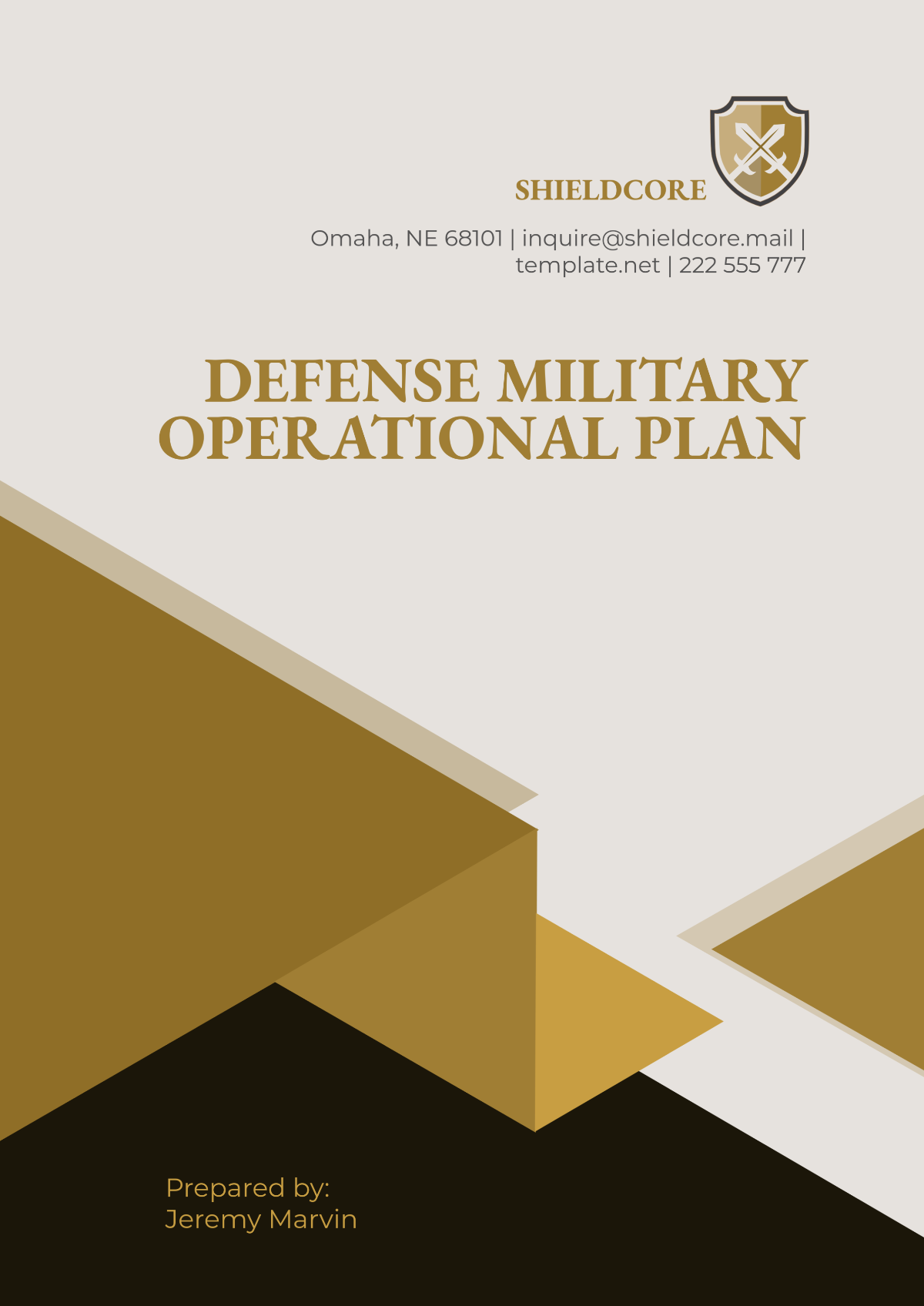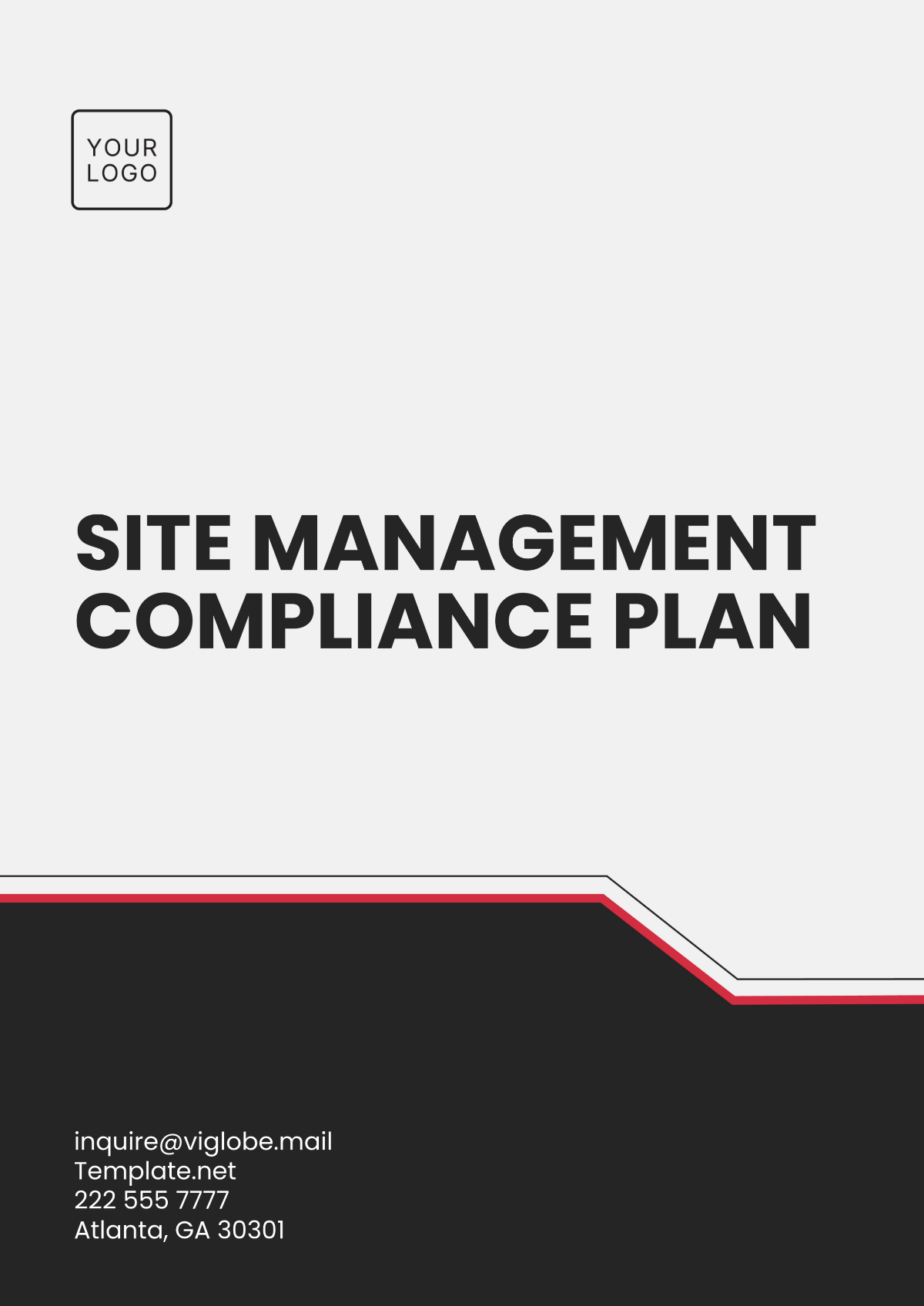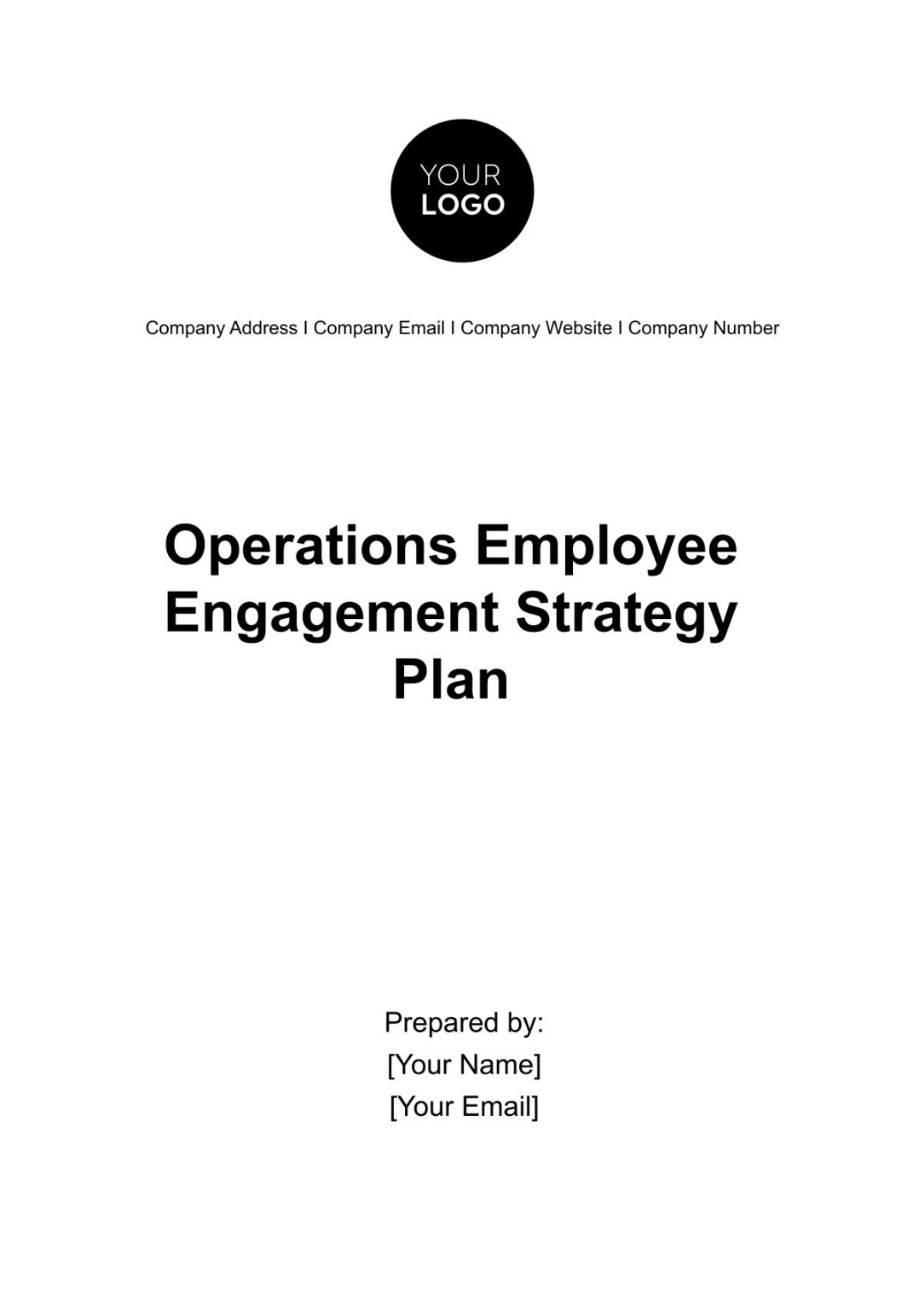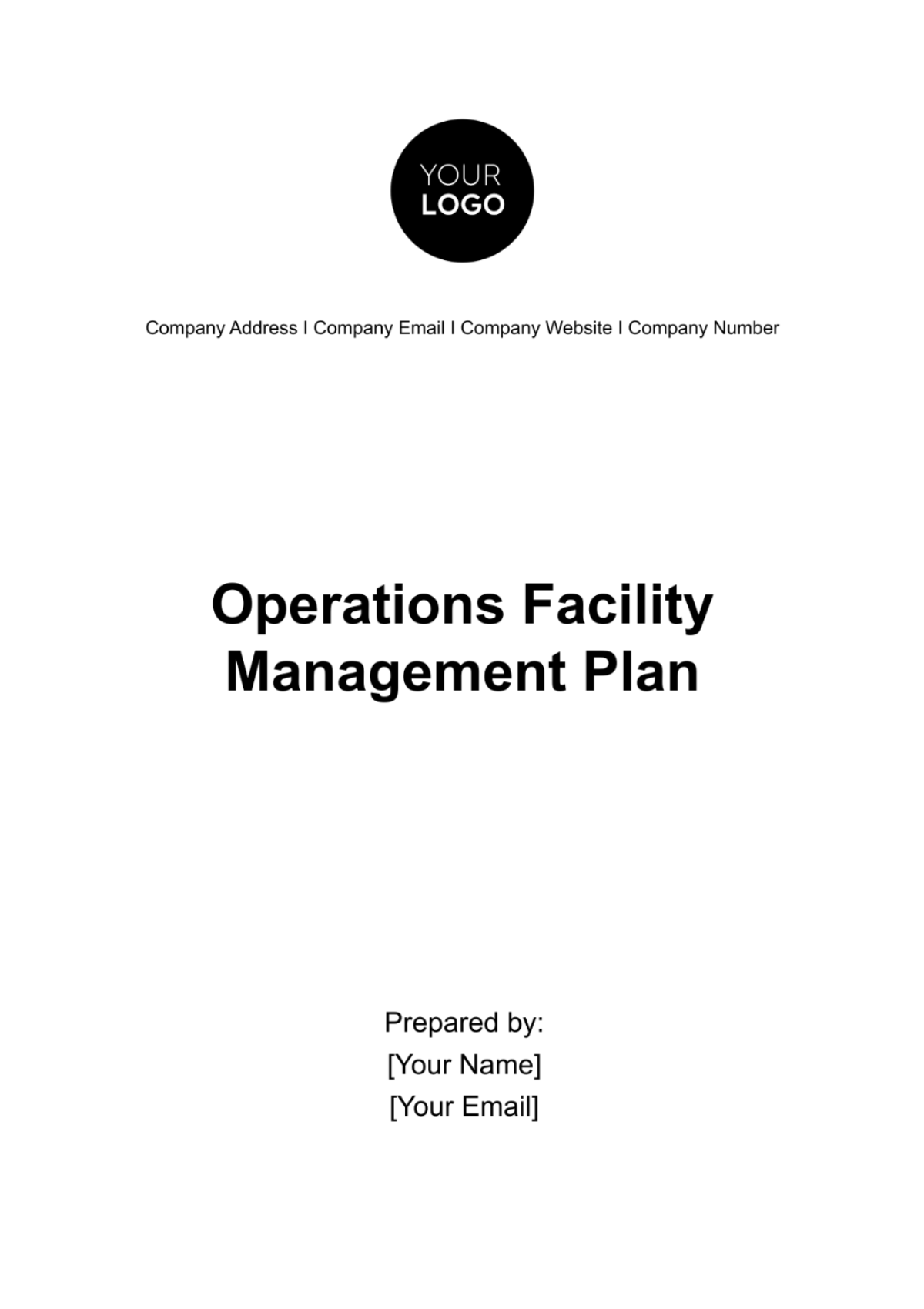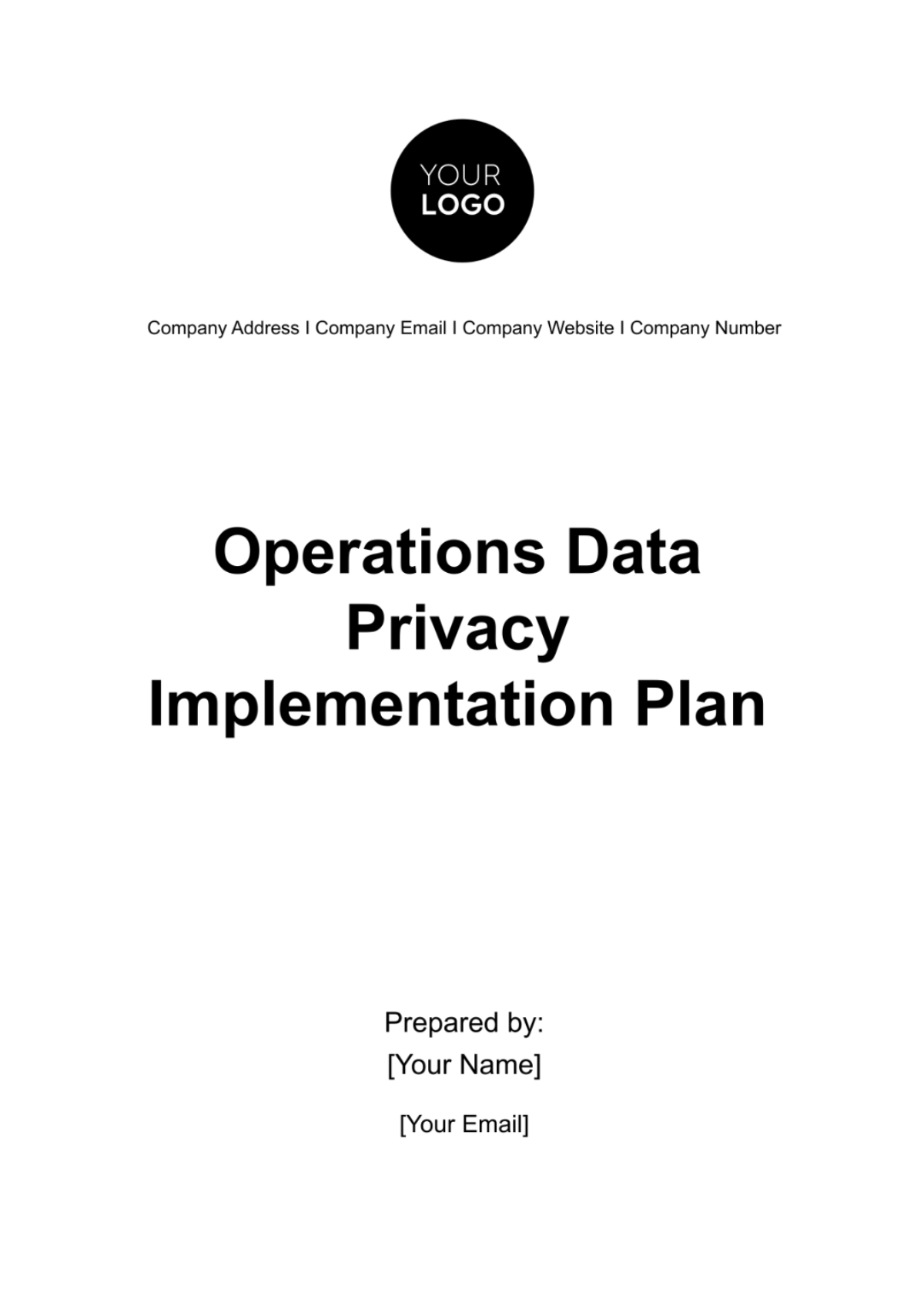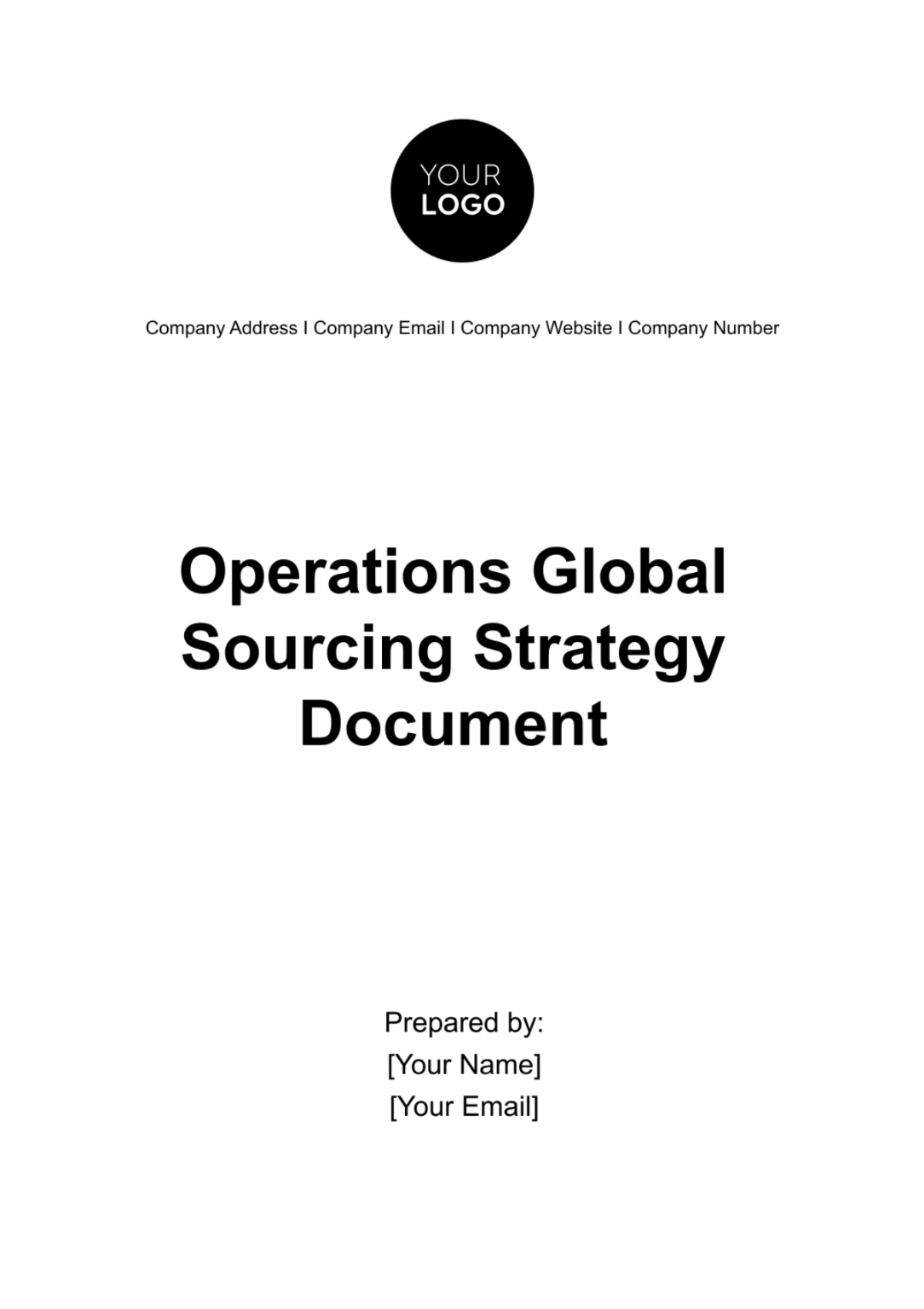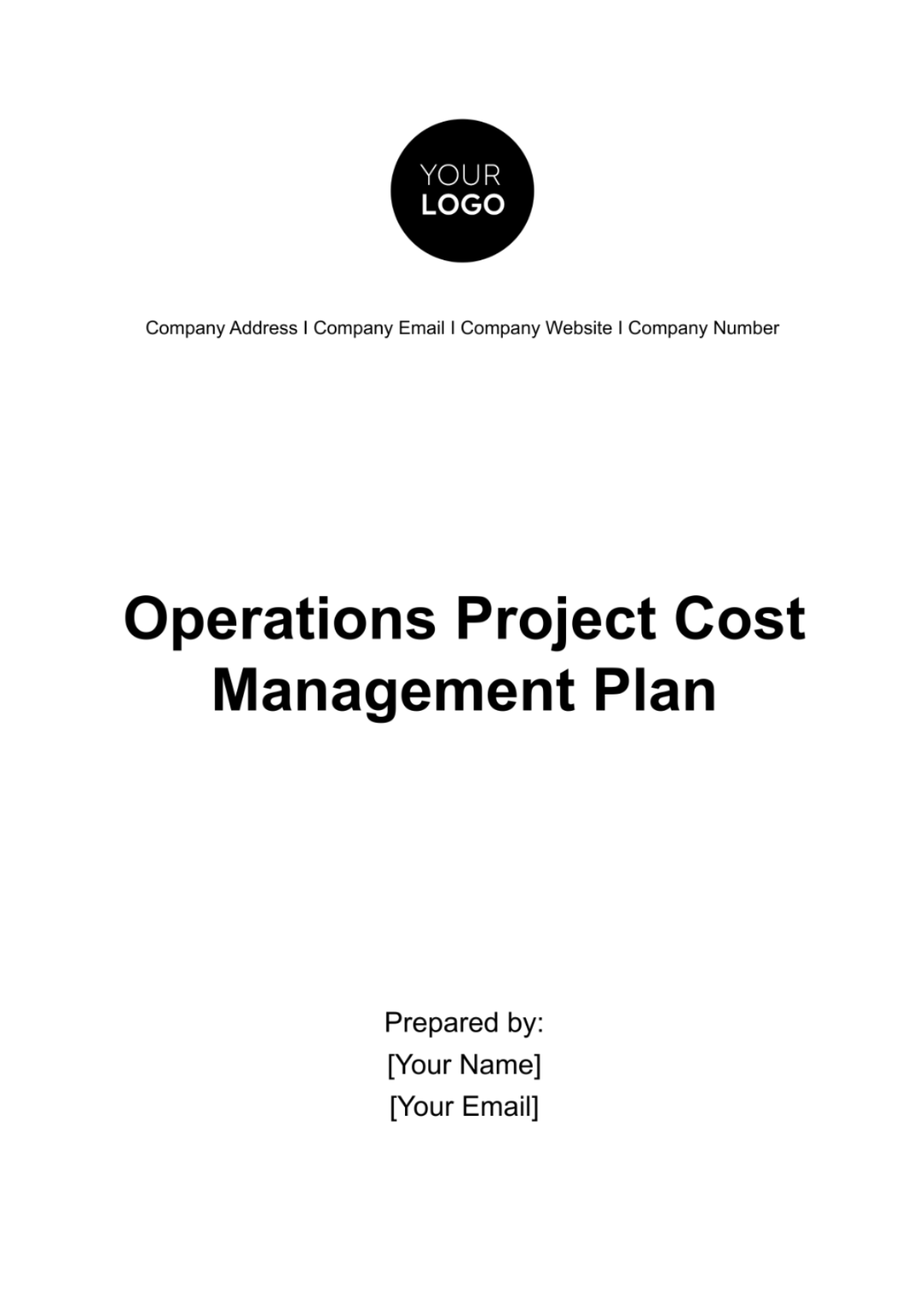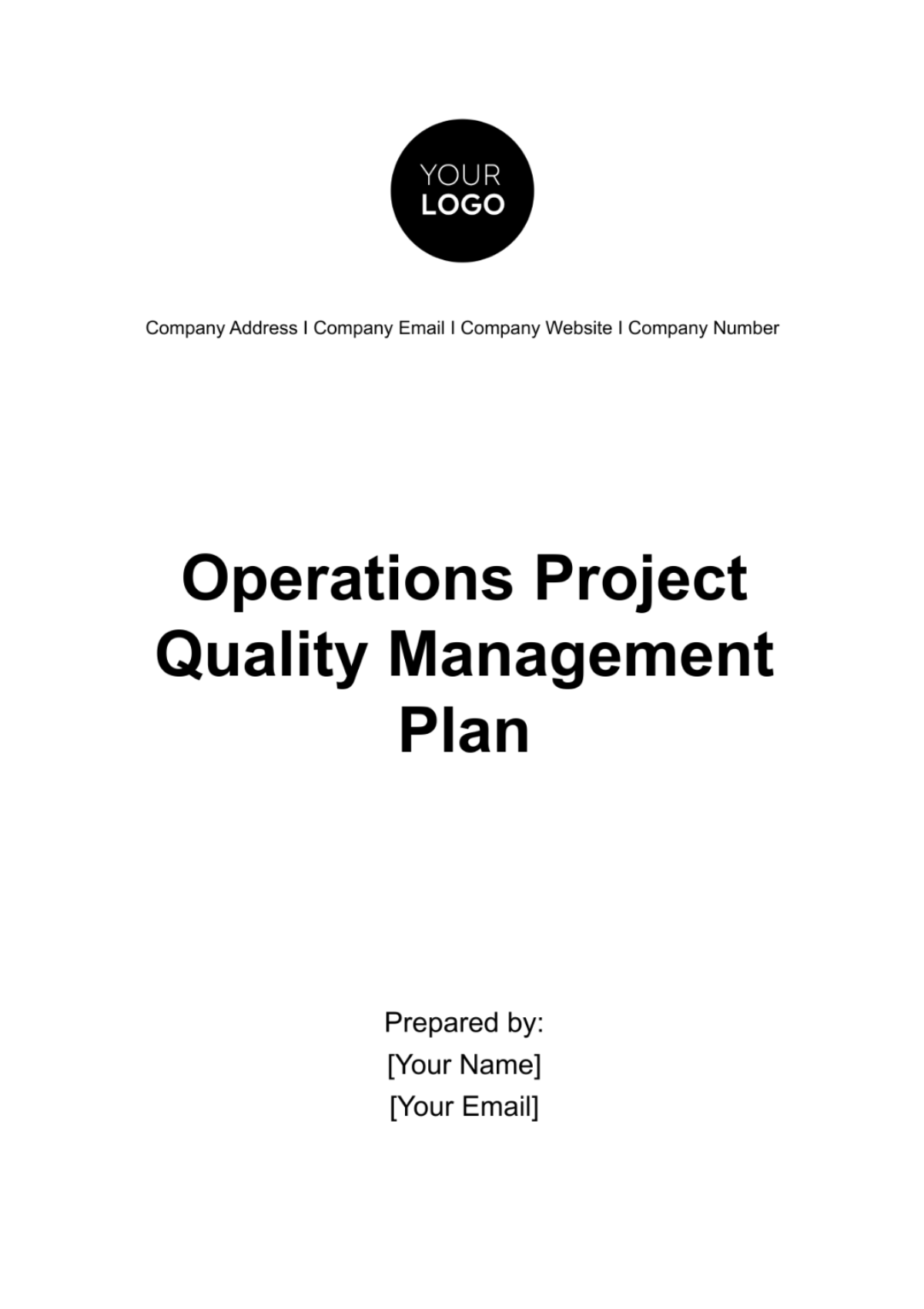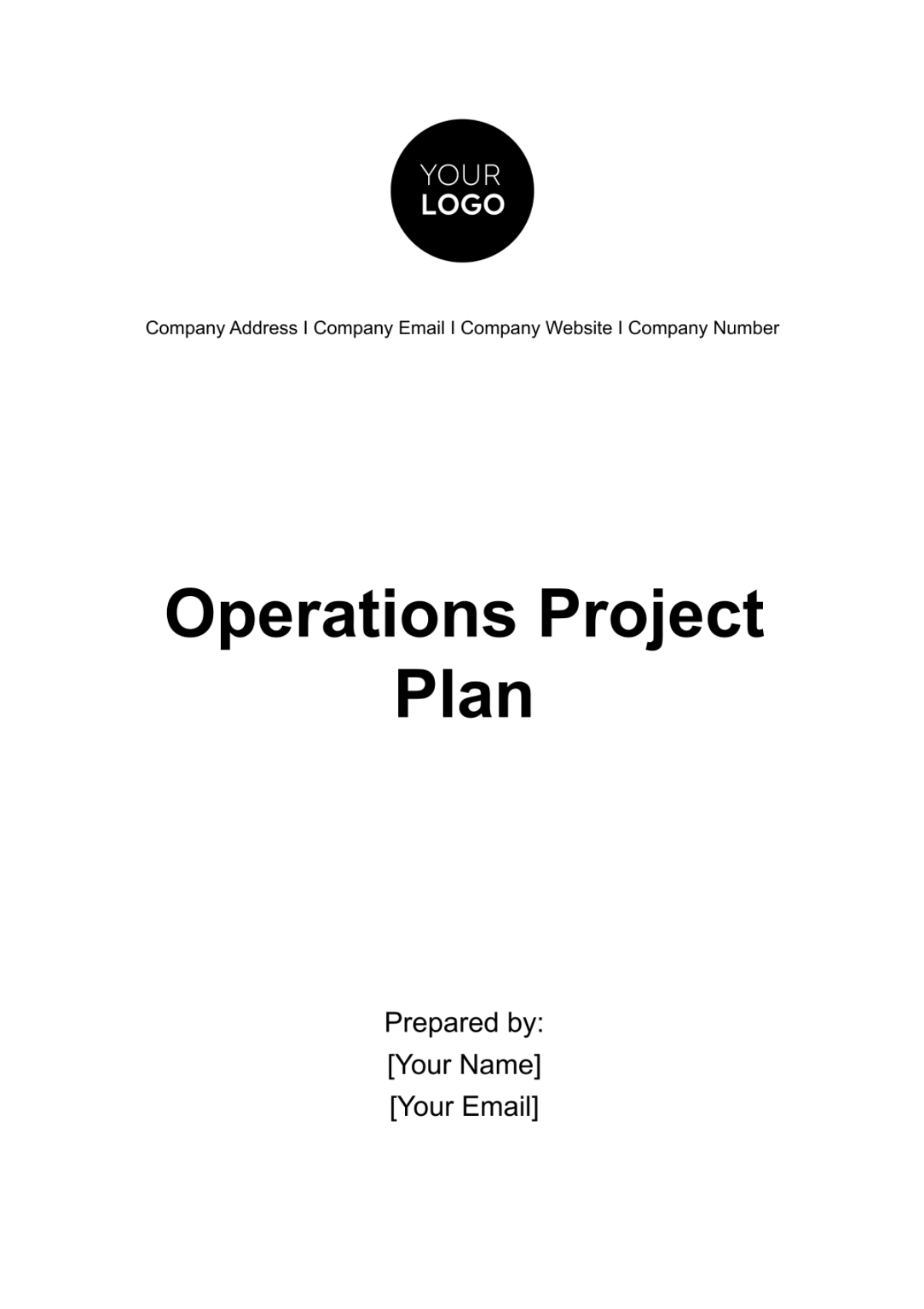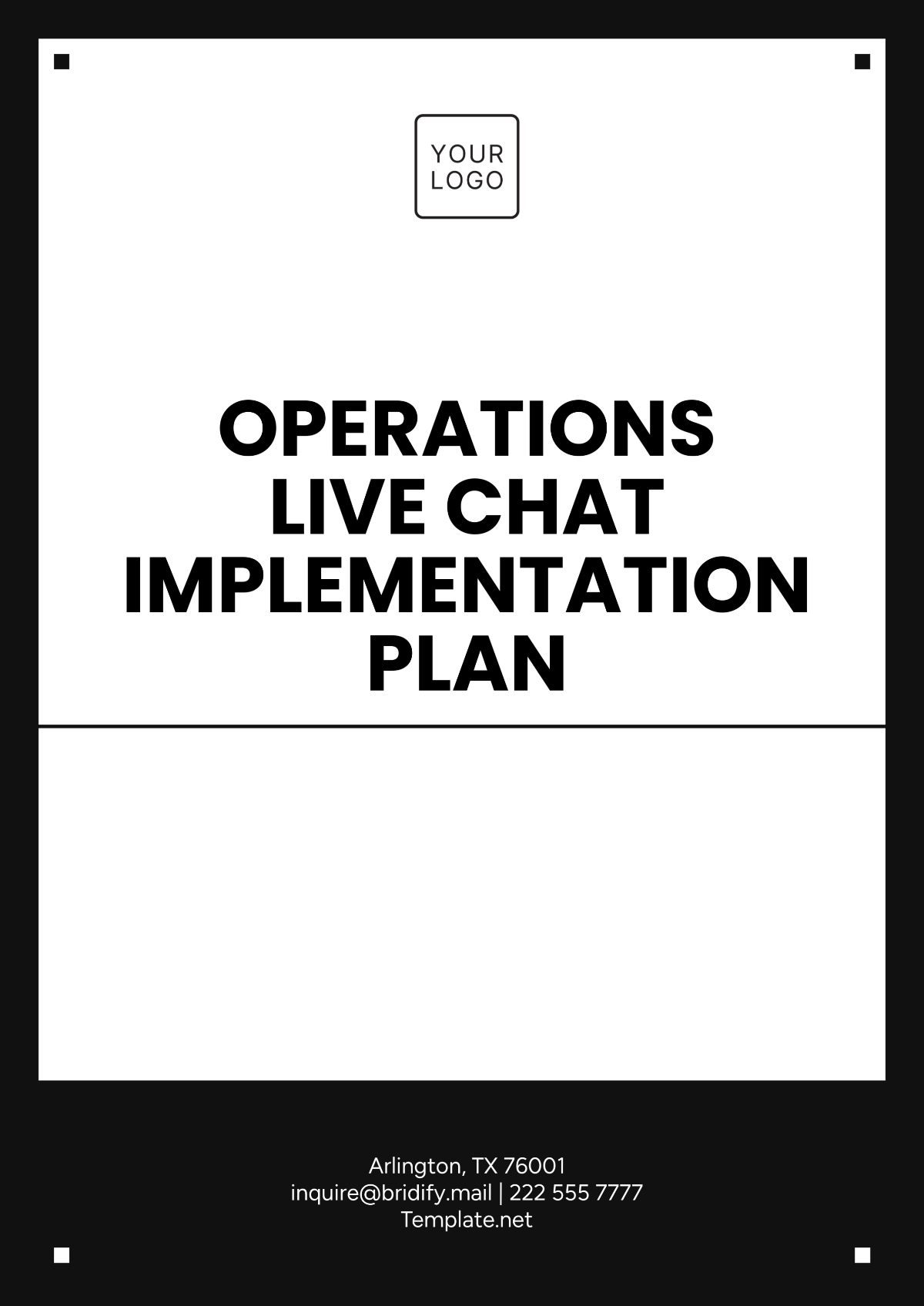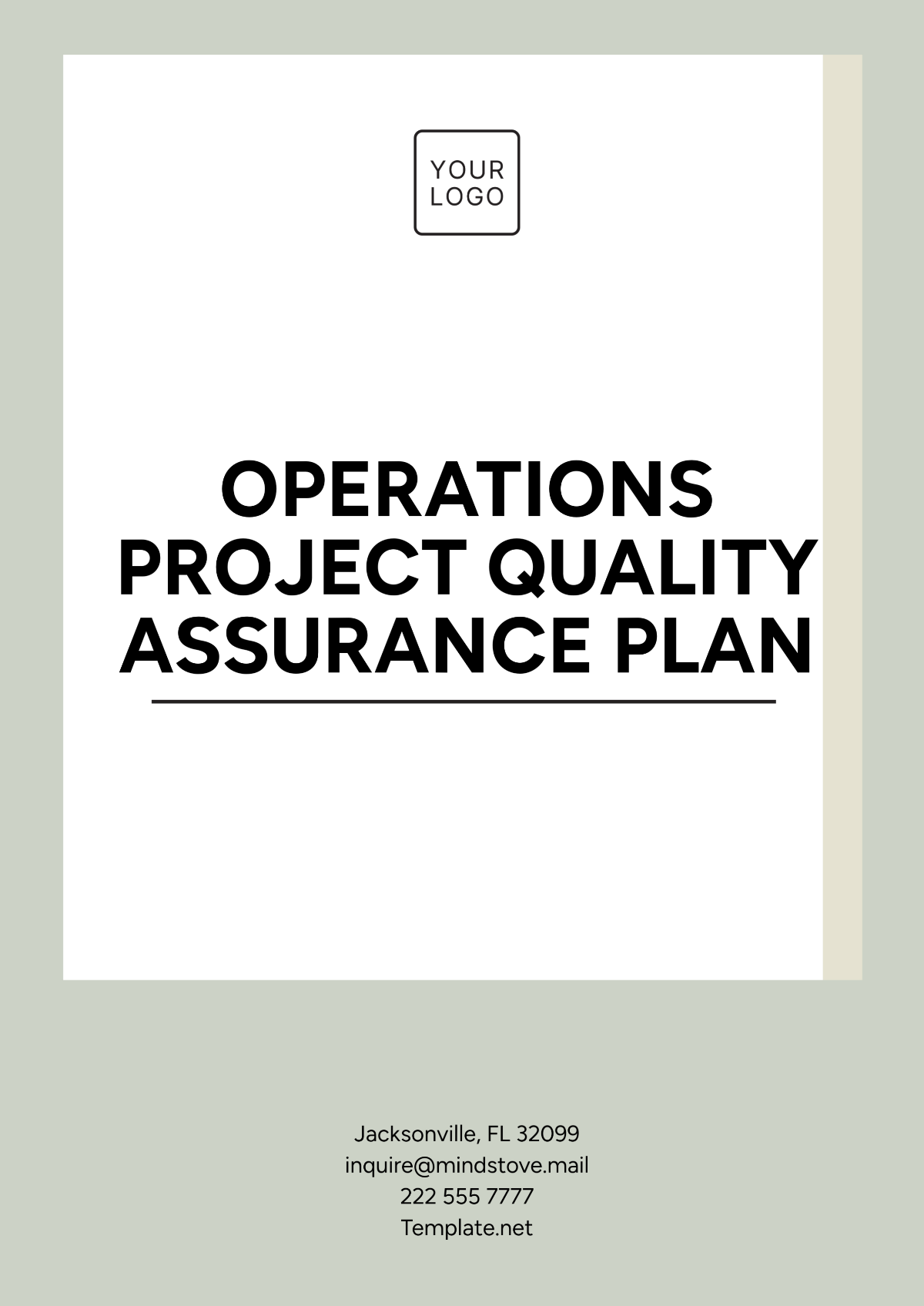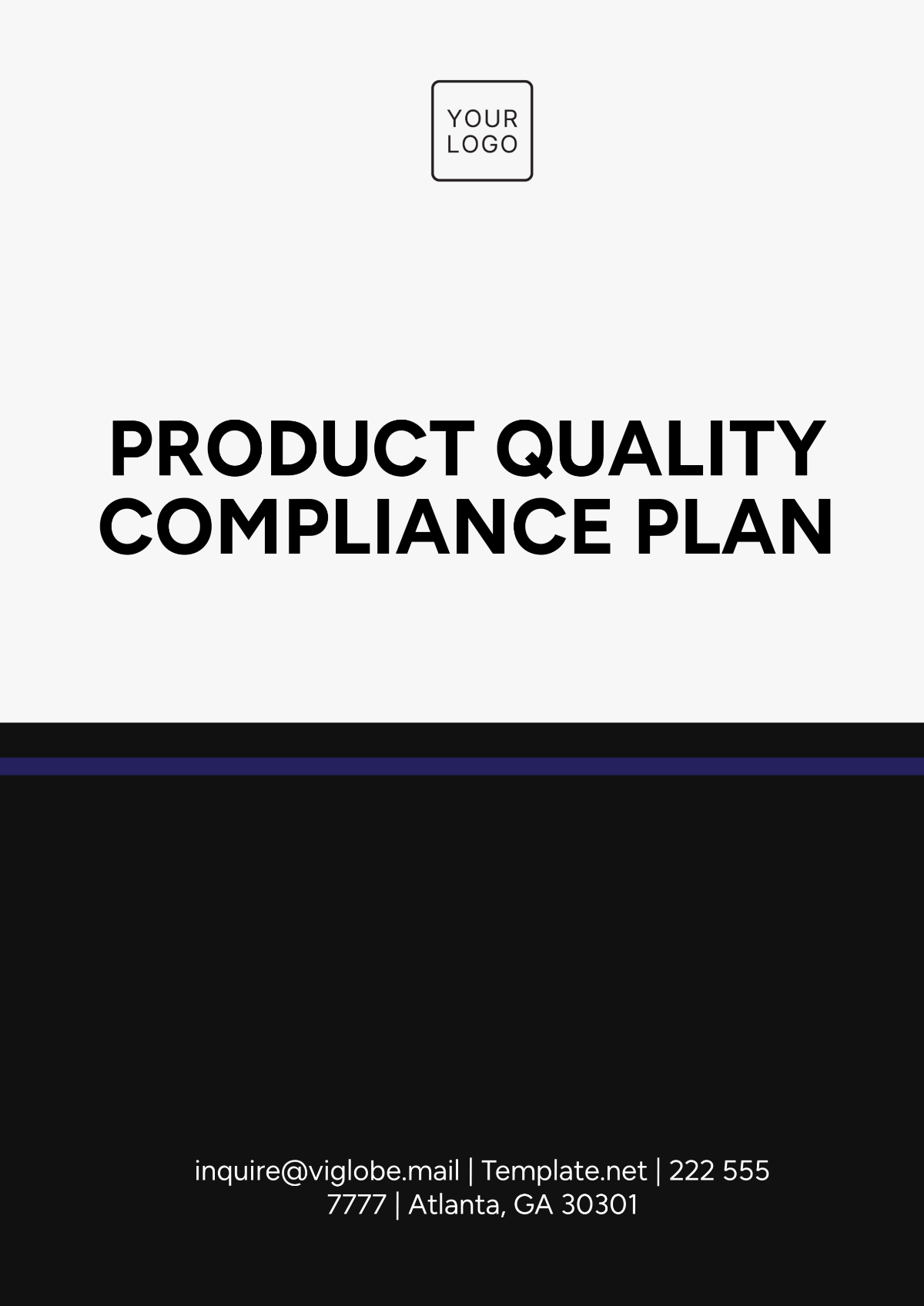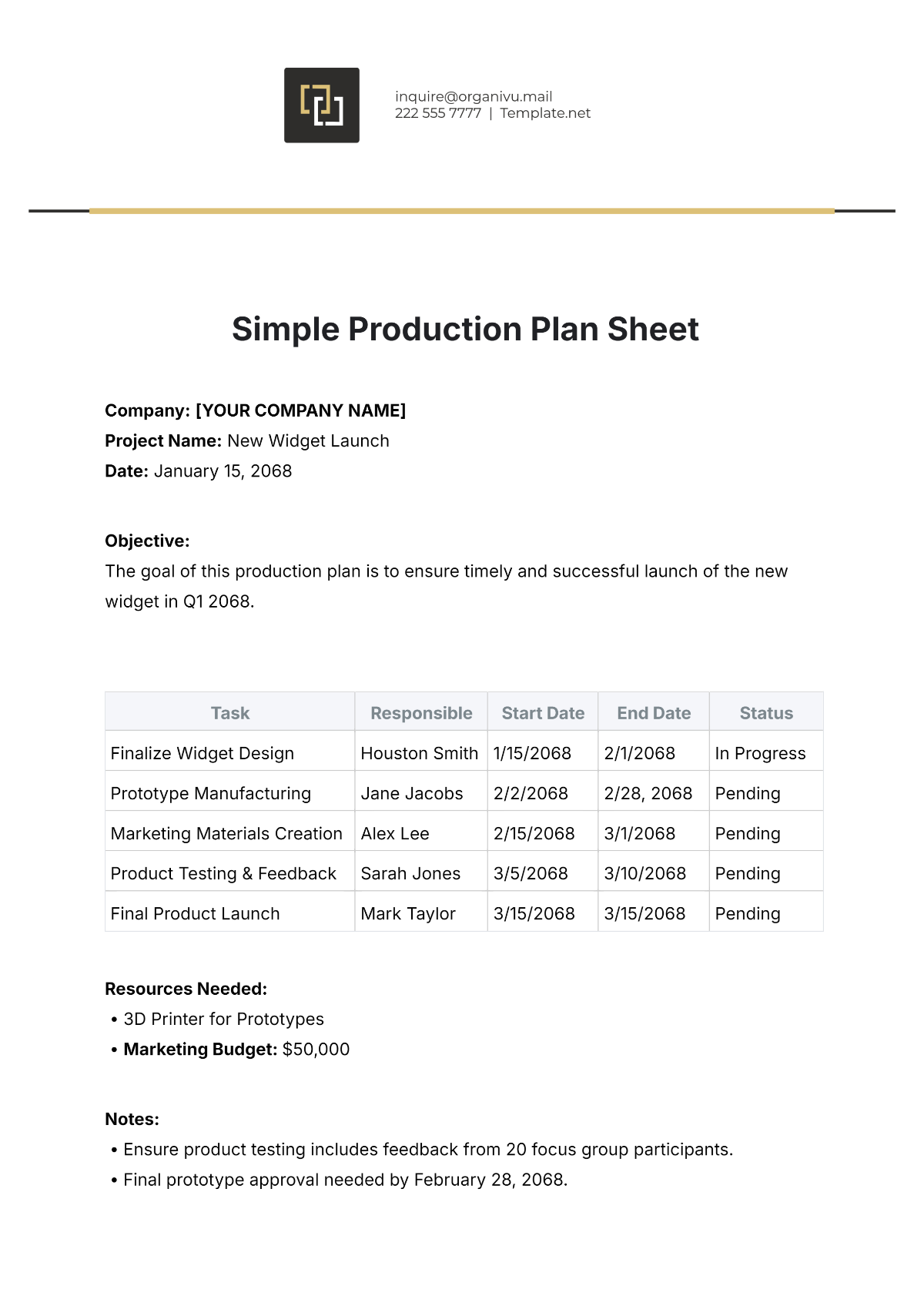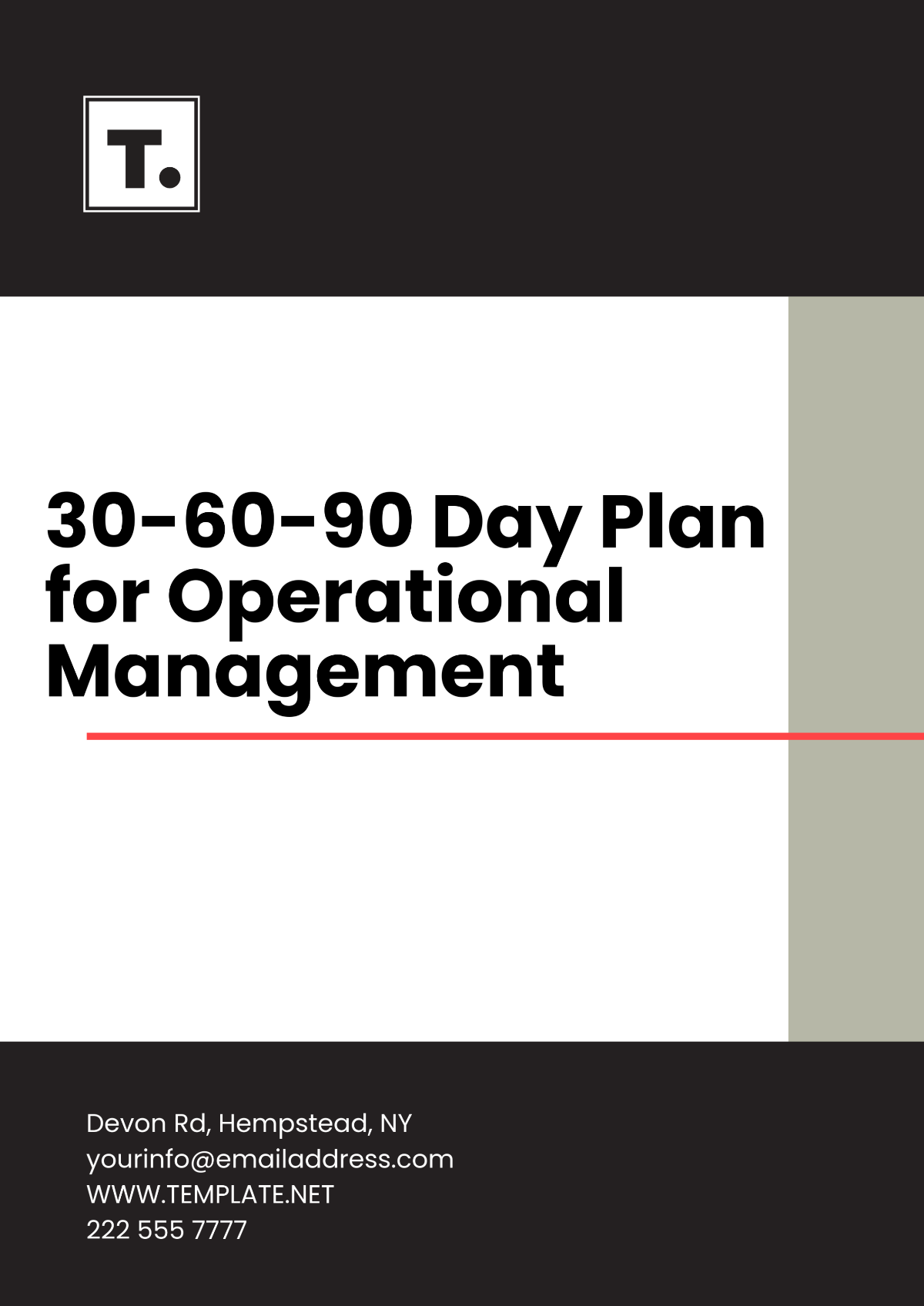Security Operational Plan
Prepared by | [Your Name] |
Date | [DATE] |
I. Executive Summary
[Your Company Name]'s Security Operational Plan outlines the strategies and measures to mitigate security risks and protect assets. It encompasses physical security, personnel security, information security, emergency response, compliance, and continuous improvement initiatives. The plan emphasizes proactive risk assessment, comprehensive training, and vigilant monitoring to ensure a secure environment for all stakeholders.
II. Business Overview
A. Company Overview
[Your Company Name] is committed to maintaining a safe and secure environment for its employees, clients, and assets. As a leader in the security industry, we recognize the importance of implementing robust security measures to mitigate risks and protect against potential threats.
B. Objective
The primary objective of this Security Operational Plan is to outline comprehensive security procedures and protocols to safeguard [Your Company Name]'s premises, personnel, and sensitive information. By implementing these measures, we aim to minimize security breaches, ensure compliance with regulatory requirements, and enhance overall safety and security.
III. Scope
This Security Operational Plan encompasses all aspects of security management within [Your Company Name], including but not limited to:
Physical Security: Protection of premises, facilities, and assets through access control, surveillance, and perimeter security measures.
Personnel Security: Screening, training, and monitoring of employees to prevent insider threats and unauthorized access.
Information Security: Safeguarding sensitive data, intellectual property, and IT infrastructure from cyber threats and data breaches.
Emergency Response: Establishing procedures for responding to security incidents, emergencies, and crisis situations promptly and effectively.
Compliance: Ensuring compliance with relevant laws, regulations, and industry standards pertaining to security and privacy.
IV. Risk Assessment
A. Identification of Threats:
Conduct a comprehensive assessment to identify potential security threats and vulnerabilities specific to [Your Company Name]'s operations and environment.
Consider external threats such as burglary, vandalism, and cyber attacks, as well as internal threats such as unauthorized access, data breaches, and insider threats.
B. Analysis of Risks:
Evaluate the likelihood and potential impact of identified threats on [Your Company Name]'s operations, personnel, and assets.
Prioritize risks based on their severity, frequency, and potential consequences, taking into account the value of assets at risk and the likelihood of successful exploitation.
C. Risk Mitigation Strategies:
Develop risk mitigation strategies and countermeasures to address identified vulnerabilities and reduce the likelihood and impact of security incidents.
Implement a layered approach to security, combining physical, personnel, and technological controls to create multiple barriers against threats.
V. Roles and Responsibilities
A. Security Manager
Oversees the implementation and enforcement of security policies and procedures.
Conducts regular risk assessments and security audits to identify vulnerabilities and areas for improvement.
Coordinates with external security agencies, law enforcement, and regulatory authorities as necessary.
B. Security Officers
Patrols premises, monitors surveillance systems, and responds to security incidents.
Enforces access control measures and conducts security checks on employees, visitors, and vehicles.
Provides assistance and support during emergencies, evacuations, or crisis events.
C. IT Security Specialist
Implements and maintains cybersecurity measures to protect against unauthorized access, malware, and cyber threats.
Monitors network activity, conducts vulnerability assessments, and implements security patches and updates.
Provides training and awareness programs to educate employees on cybersecurity best practices.
VI. Security Measures
A. Access Control
Installation of access control systems, including key card entry, biometric scanners, and visitor management systems.
Regular review and update of access privileges based on employee roles and responsibilities.
Monitoring and logging of access attempts for auditing and accountability purposes.
B. Surveillance and Monitoring
Deployment of CCTV cameras at strategic locations to monitor premises and deter criminal activity.
24/7 monitoring of surveillance feeds by trained security personnel or through automated systems.
Review and analysis of surveillance footage to investigate security incidents and gather evidence.
C. Physical Security
Implementation of physical barriers, fencing, and bollards to control access points and secure perimeters.
Installation of alarm systems, motion sensors, and intruder detection devices to detect unauthorized entry.
Regular patrols and security checks to identify and address potential security breaches or vulnerabilities.
D. Information Security
Encryption of sensitive data stored on servers, databases, and portable devices to prevent unauthorized access or data theft.
Implementation of firewalls, antivirus software, and intrusion detection systems to protect against cyber threats.
Employee training and awareness programs on data security best practices, password management, and phishing awareness.
VII. Emergency Response Plan
A. Emergency Contact Information
Maintain a list of emergency contacts, including local law enforcement, fire department, medical services, and key personnel.
Distribute emergency contact information to all employees and post it in prominent locations throughout the premises.
B. Evacuation Procedures
Develop and communicate evacuation routes, assembly points, and emergency procedures to all employees.
Conduct regular drills and training exercises to ensure employees are familiar with evacuation procedures and emergency protocols.
C. Incident Response
Establish an incident response team responsible for coordinating and managing security incidents, such as breaches, thefts, or disruptions.
Define escalation procedures and communication protocols to notify relevant stakeholders and authorities in the event of a security incident.
VIII. Training and Awareness
A. Security Training
Provide initial and ongoing security training to all employees, covering topics such as access control, emergency response, and cybersecurity awareness.
Tailor training programs to specific roles and responsibilities, ensuring employees are equipped to handle security-related tasks effectively.
B. Security Awareness
Promote a culture of security awareness through regular communication, posters, newsletters, and awareness campaigns.
Encourage employees to report suspicious activities, security concerns, or potential vulnerabilities promptly.
IX. Compliance and Review
A. Regulatory Compliance
Stay abreast of relevant laws, regulations, and industry standards related to security and privacy.
Conduct regular audits and assessments to ensure compliance with regulatory requirements and security best practices.
B. Continuous Improvement
Monitor and evaluate the effectiveness of security measures through periodic reviews, incident analysis, and feedback from stakeholders.
Implement corrective actions and enhancements to address identified weaknesses or gaps in security protocols.
X. Conclusion
The successful implementation of this Security Operational Plan requires collaboration, vigilance, and a commitment to maintaining a safe and secure environment for all stakeholders. By adhering to the outlined procedures and protocols, [Your Company Name] can mitigate security risks, protect valuable assets, and uphold its reputation as a trusted leader in the security industry.
